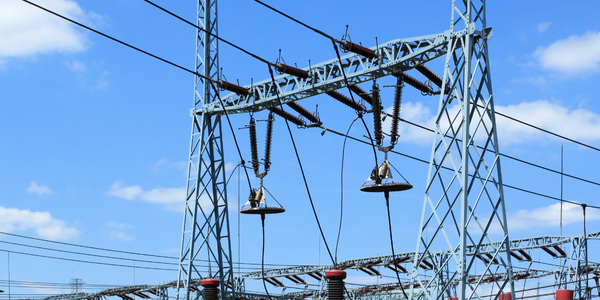公司规模
SME
地区
- America
国家
- United States
产品
- Veracode Greenlight
- AWS Lambda
- Amazon API Gateway
- AWS Key Management Service
- Amazon EC2
技术栈
- Cloud Computing
- Serverless Computing
- API Management
- Auto Scaling
- Data Encryption
实施规模
- Enterprise-wide Deployment
影响指标
- Productivity Improvements
- Digital Expertise
- Innovation Output
技术
- 基础设施即服务 (IaaS) - 云计算
- 应用基础设施与中间件 - API 集成与管理
- 基础设施即服务 (IaaS) - 云中间件与微服务
适用功能
- 离散制造
- 产品研发
用例
- 网络安全
- 入侵检测系统
- 计算机视觉
服务
- 云规划/设计/实施服务
- 软件设计与工程服务
关于客户
Veracode, a CA Technologies company based in Burlington, Massachusetts, is a growing application-security company. Founded in 2006, the company provides an automated cloud-based service for securing web, mobile, and third-party enterprise applications. The company has around 100 employees and operates in the United States. Veracode's main product is Greenlight, a tool that helps developers discover and fix security-related defects while they are writing code. The company's mission is to secure software applications so developers don’t release software that could be susceptible to breaches.
挑战
Veracode, a CA Technologies company, is on a mission to secure software applications so developers don’t release software that could be susceptible to breaches. As part of this mission, the company created Greenlight, a tool that helps developers discover and fix security-related defects while they are writing code. Because Greenlight is designed to find security flaws quickly, Veracode must ensure strong performance. “We need to deliver security vulnerability results in under a minute,” says Patrick Day, principal cloud engineer for Veracode. “If developers wait too long for the data, they’ll move on to a different product.” Veracode also needs to scale its solution to accommodate growth. “As we were building the application, we needed to plan for increases in code-scan volume,” Day says. As an application-development company, Veracode also strives to reduce the amount of time employees spend managing the IT environment. Day says, “We’re focused on developing and deploying products, so we don’t want to put our resources and energy into managing and provisioning.”
解决方案
Veracode chose to meet its needs for speed, scalability, and time savings by building Greenlight on the Amazon Web Services (AWS) Cloud. “I had used AWS in previous jobs, and I was very confident in its ability to provide reliability and scalability,” Day says. “At Veracode, we were also excited because we saw that AWS would enable rapid prototyping without a lot of backend management.” Veracode initially ran its Greenlight application on numerous Amazon Elastic Compute Cloud (Amazon EC2) instances. Recently, the company started using AWS Lambda, a managed service that gives Veracode the ability to run code without provisioning and managing servers. Veracode also uses Amazon API Gateway to access data and functionality for Greenlight. Additionally, the company uses Auto Scaling to automatically scale Greenlight up or down based on scan-volume growth. To enhance application security, Veracode takes advantage of AWS Key Management Service (AWS KMS), a managed service that helps the company create and control encryption keys to encrypt Greenlight data.
运营影响
数量效益

Case Study missing?
Start adding your own!
Register with your work email and create a new case study profile for your business.
相关案例.

Case Study
Protecting a Stadium from Hazardous Materials Using IoT2cell's Mobility Platform
There was a need for higher security at the AT&T Stadium during the NFL draft. There was a need to ensure that nuclear radiation material was not smuggled inside the stadium. Hazmat materials could often be missed in a standard checkpoint when gaining entry into a stadium.

Case Study
Enel Secures Italian Power Generation Network
Electric energy operators around the world are working to increase the reliability and cyber resiliency of their systems. This includes Enel, a global power company that manages and monitors the Italian power grid. This grid:• Serves 31 million customers• Has a net installed energy capacity exceeding 31 gigawatts• Includes more than 500 power generation plants,including hydroelectric, thermoelectric, and wind• Is managed and monitored by Enel 24/7/365• Is operated by Terna, the Italian Transmission System Operator (TSO)Enel is responsible for the availability of the grid’s underlying ICS and industrial network. It also manages Regional Control Centers and Interconnection Centers which connect with the TSO. The TSO manages the flow of energy to the grid plus controls and remotely regulates the power generation of power plants, increasing and decreasing power production as required. The complex system of interaction and cooperation between Enel and the TSO has strong security implications as well as operational and business challenges.

Case Study
Securing the Connected Car Ecosystem
In-vehicle communications and entertainment system hosts high-value or sensitive applications. API libraries facilitate communication and sharing of vehicle data. These API libraries are vulnerable to reverse engineering and tampering attacks and may even result in loss of passenger safety. Attackers can inject malware that may be able to migrate to other in-car networks such as the controller-area-network (CAN) bus which links to the vehicle’s critical systems. Software provided for dealers to interface with cars through the OBD2 port is vulnerable to reverse engineering and tampering attacks. Hackers may be able to abuse these tools to inject malicious code into the ECUs and CAN bus. Attackers can lift the cryptographic keys used, and use that to build their own rogue apps/software. Their cloned version of the original app/software may have altered functionality, and may intend to gain access to other in-car networks.

Case Study
Secure and Cloud-based Data Marketplace
The great promise of new connected concepts of industry like 'Industry 4.0' is their ability to deliver a historically unparalleled level of responsiveness and flexibility. While modern supply chains are already heavily integrated and designed to be fluid and fast moving, a large swathe of manufacturing still remains beholden to economies of scale, large production runs, and careful preplanning.The Industrial Internet of Things (IIoT) is set to change this by allowing small-batch or even custom manufacturing on a truly industrial scale. With machines whose functions are not set in stone, but flexible and determined by their operating software and with a new form of connectivity bringing industrial engineers, product manufacturers, and end users closer together than ever before. Ad-hoc adjustments to automotive parts, for example, during active product runs or the bespoke manufacturing of custom sneakers become very viable options indeed.Much of this remains a theoretical vision, but IUNO, the German national reference project for IT security in Industry 4.0 demonstrates the new capabilities in action with a secure technology data marketplace running a smart drinks mixer.

Case Study
Expedia Hosted by 2lemetry Through AWS
Expedia is committed to continuous innovation, technology, and platform improvements to create a great experience for its customers. The Expedia Worldwide Engineering (EWE) organization supports all websites under the Expedia brand. Expedia began using Amazon Web Services (AWS) in 2010 to launch Expedia Suggest Service (ESS), a typeahead suggestion service that helps customers enter travel, search, and location information correctly. According to the company’s metrics, an error page is the main reason for site abandonment. Expedia wanted global users to find what they were looking for quickly and without errors. At the time, Expedia operated all its services from data centers in Chandler, AZ. The engineering team realized that they had to run ESS in locations physically close to customers to enable a quick and responsive service with minimal network latency.
.png)
Case Study
OTA Software Updates for Smart Energy (gridX)
gridX has a requirement for over-the-air software updates for their gridBox devices and used the Yocto Project for their builds. The driver for the requirement was having the ability to quickly support new features, as well as deploying bug fixed and path known security vulnerabilities. New software updates with a US stick manually to all gridBox devices in the field would be prohibitively expensive and labor-intensive.

---nasdaq--amzn_14.jpg)

